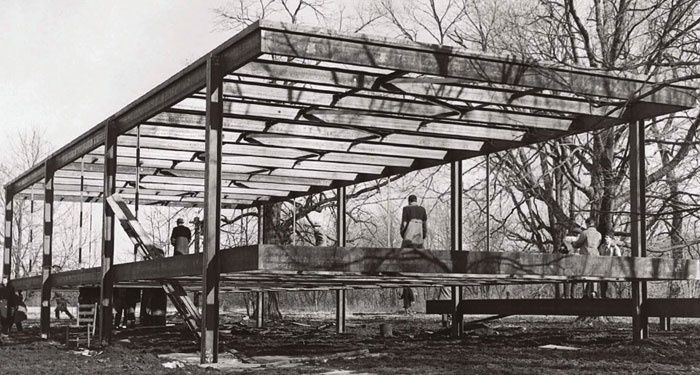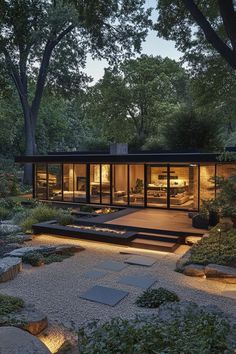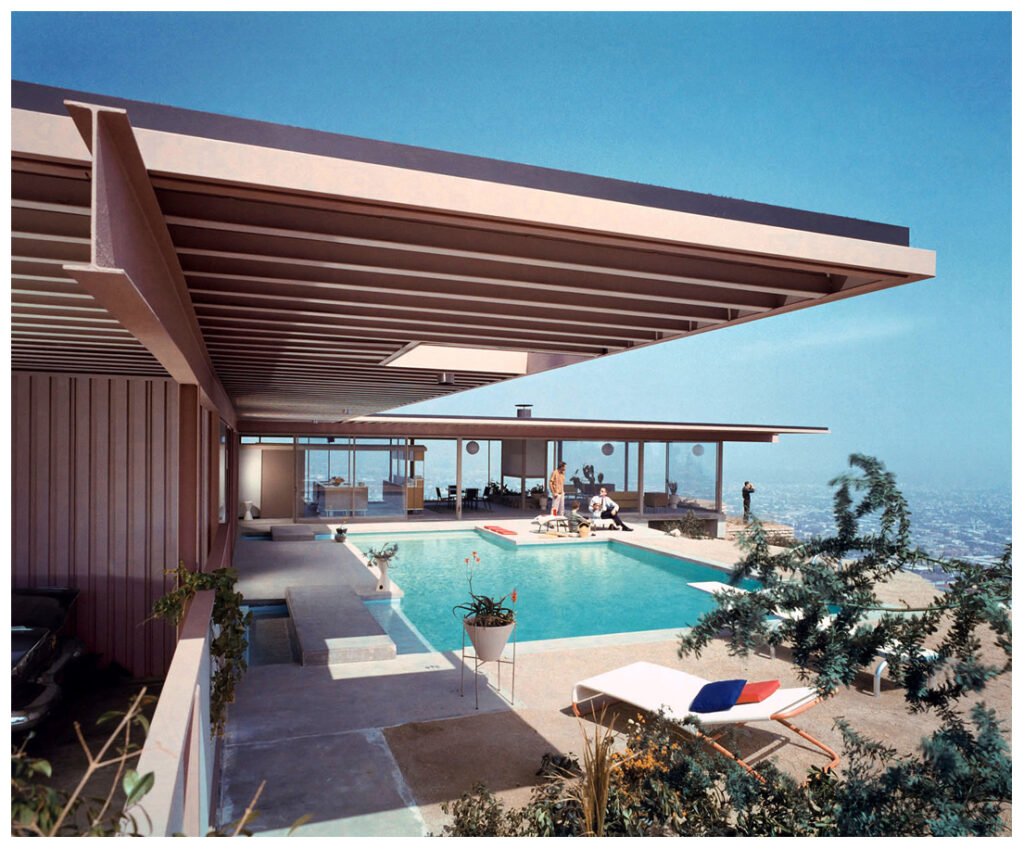Step back into the charged atmosphere of post-war America, where the nation was not only rebuilding but reinventing itself—on every block and boulevard. Amid a tidal wave of optimism, new residential areas sprang up like fresh paint on an urban canvas. The traditional methods of bricklaying and mortar simply couldn’t keep pace with the insatiable demand for housing. Labor was scarce, and time was a luxury no one could afford. In this high-octane era of rapid development, architects and builders needed a construction system that was as bold and agile as the spirit of the times.

Enter steel—the unsung hero of mid-century modern design. With its inherent strength, lightweight versatility, and ability to be prefabricated, steel emerged as the champion of rapid construction. No longer bound by the slow, labor-intensive methods of the past, builders could now assemble entire homes in record time. This wasn’t just about efficiency; it was about a revolution in the basic construction system. Steel beams and columns became the backbone of a new architectural language, enabling expansive open floor plans and uninterrupted glass walls that ushered in natural light like never before.
The use of steel was as much a product of circumstance as it was a creative choice. With new residential areas demanding swift expansion, the traditional, time-worn techniques of construction fell short. Steel allowed for a more standardized, modular approach, cutting down on on-site labor while ensuring that each structure met the rigorous demands of durability and modern aesthetics. It was a marriage of practicality and innovation—a building system that was fast, efficient, and perfectly in tune with the zeitgeist.
This era was not just a technical revolution; it was a cultural one. The raw, industrial edge of steel brought with it a futuristic flair that resonated with a society eager to break free from the past. The clean lines, open spaces, and seamless integration of indoor and outdoor environments were not mere trends—they were declarations of a new way of living. As steel structures rose swiftly to meet the burgeoning needs of a reimagined urban landscape, they also became canvases upon which the dreams of a hopeful nation were boldly painted.

In the end, the rise of steel in mid-century construction was a confluence of necessity and ambition. It provided the speed and efficiency required by an era of rapid urban expansion while also offering an aesthetic that spoke to the modern soul. Amid the ruins of an old world, steel forged a pathway into the future—a future defined by open spaces, natural light, and the promise of progress.
Welcome to the roots of modern design, where every steel beam and glass wall stands as a testament to a time when the spirit of innovation met the urgency of rebuilding a nation.

